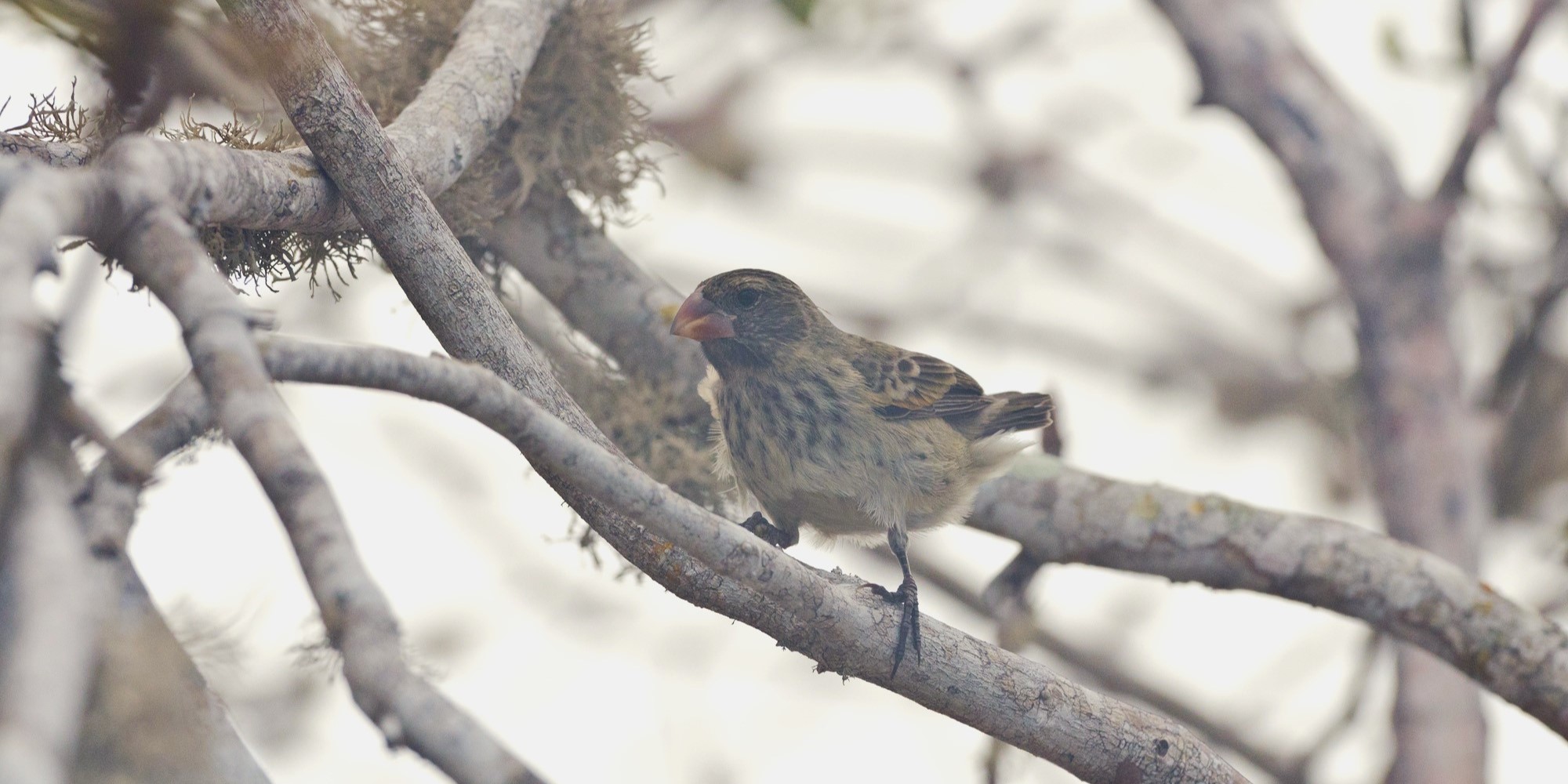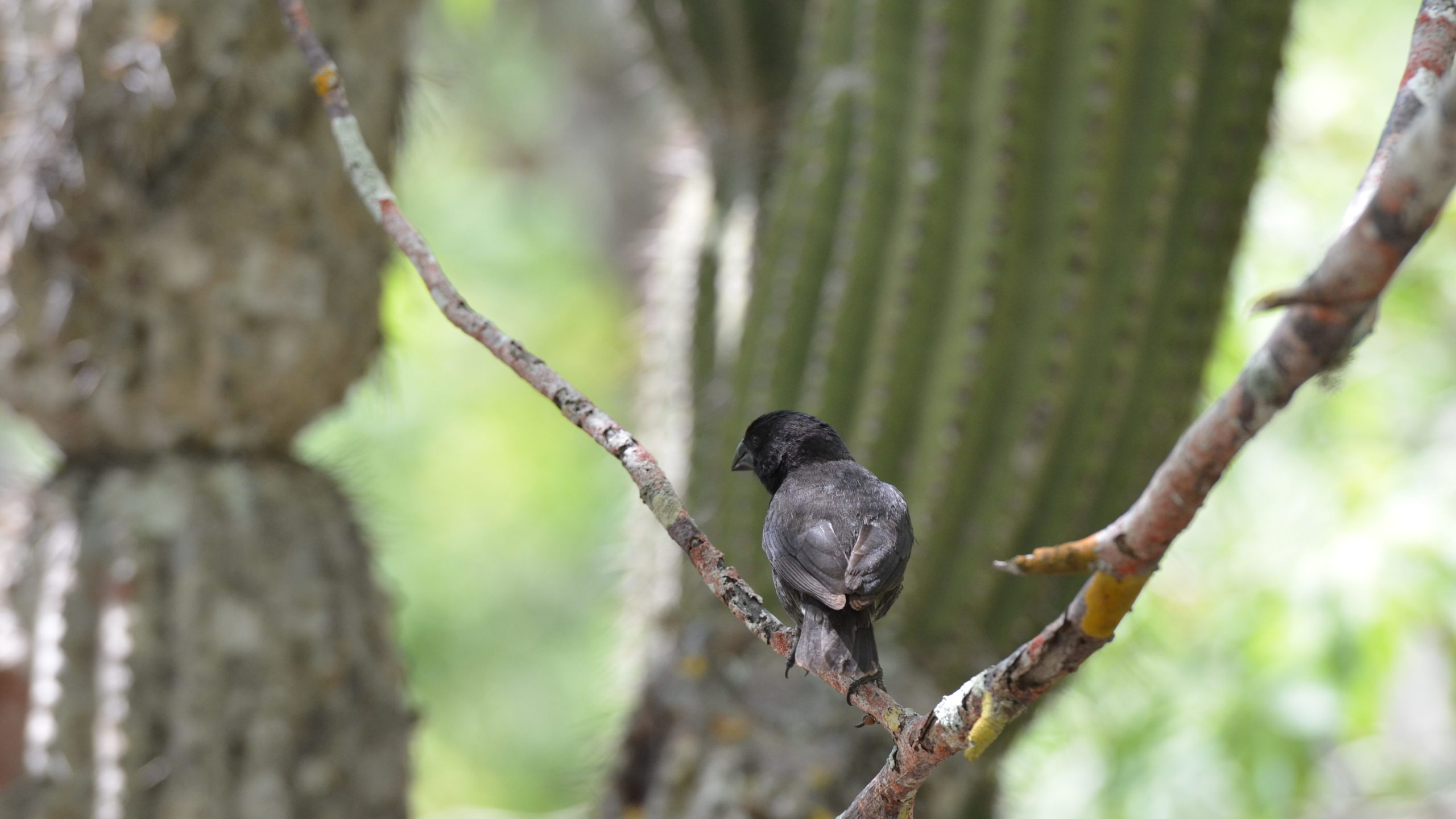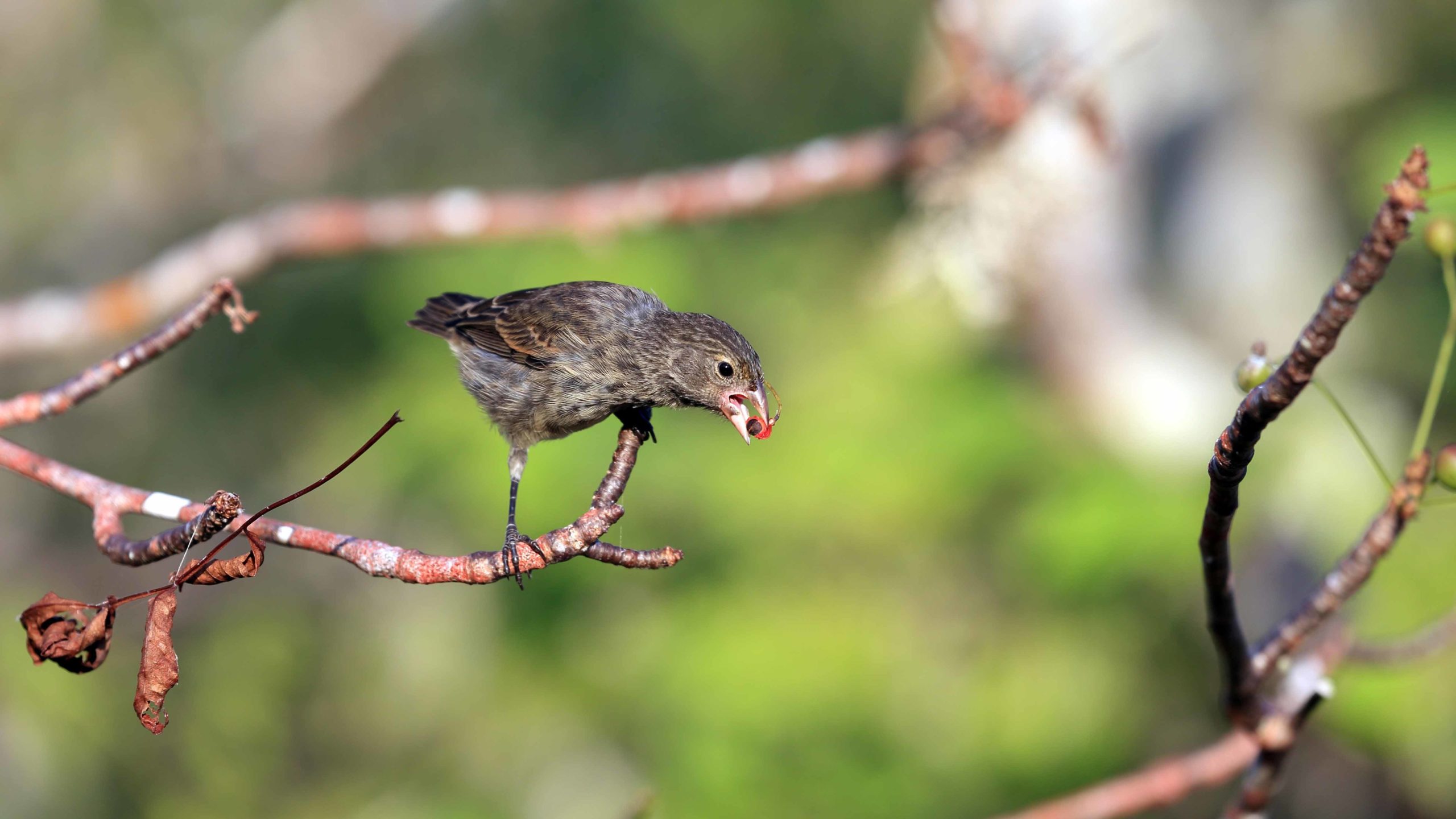October 13, 2025
Meet the Galápagos Finches: Nature’s Tiny Marvels

Few creatures capture the wonder of the Galápagos Islands like the finches Charles Darwin once observed. These small birds, often called Darwin’s finches, hold big secrets about evolution and adaptation. If you’re planning a Galápagos trip, you’ll likely encounter some of these fascinating little residents, they’re among the most interesting island inhabitants. Recognized around the world and studied in classrooms, these birds helped Darwin formulate his groundbreaking theory of evolution.
Why They’re Special & Darwin’s Discovery
Galápagos finches are more than just charming birds, they’re living proof of nature’s ingenuity. With remarkable variation in size, shape, and behavior, they show how species can evolve differently even across neighboring islands.
When Darwin visited the islands in 1835 aboard the HMS Beagle, he noticed that finches on different islands had distinct beak shapes. Some had thick, strong beaks for cracking seeds, while others had slender, pointed beaks for eating insects. These subtle differences, he realized, were adaptations to the specific diets and environments of each island. Observing these finches helped Darwin develop his theory of natural selection, which would later become the cornerstone of evolutionary biology.

A World of Finches: Diversity Across the Islands
The Galápagos are home to around 18 recognized species of finches, each uniquely adapted to its island environment. These species are grouped by feeding style and beak shape:
- Ground finches: Sturdy, robust beaks ideal for cracking hard seeds.
- Tree finches: Smaller, sharper beaks perfectly suited for capturing insects.
- Warbler finches: Tiny, delicate beaks for gleaning insects from leaves and branches.
From the strong, seed-cracking ground finches to the nimble, insect-hunting warblers, their variety is a vivid reflection of the islands’ ecological richness and evolutionary ingenuity.
What They Eat and How Their Beaks Help
A finch’s beak is its ultimate survival tool, perfectly shaped for the diet its island provides. Seed-eating ground finches crack hard nuts with precision, while insect-eating tree finches probe bark and foliage to catch their prey. Cactus finches sip nectar and nibble on pollen, and the famously bold vampire finch even pecks at other birds to drink blood during scarce seasons, a remarkable adaptation for survival.
Watching these birds feed is like peering into a miniature world of evolution in action, a delicate dance of adaptation that has fascinated scientists for generations.

See Them for Yourself
Depending on which islands you explore, the finches you encounter will vary, each one offering a glimpse into the story of adaptation. On a Galakiwi Galápagos tour, you’ll have the chance to spot these iconic birds in their natural habitats while hiking, biking, or exploring the highlands and coastal scrublands.
- San Cristóbal: Large ground finch, small tree finch, cactus finch
- Isabela: Vegetarian tree finch, sharp-beaked ground finch, vampire finch
- Santa Cruz: Medium ground finch, small tree finch, warbler finch
- Floreana: Ground finch, cactus finch
No matter where you go, the charm of these finches is undeniable. And with a certified naturalist guide by your side, required for most Galápagos sites, you’ll not only enjoy fascinating insights into each species but also ensure your visit supports the careful conservation of these extraordinary islands.
Ways to Support Galápagos Finches
The Galapagos Conservation Trust is working on several conservation projects to protect finches across the islands, and supporting them helps ensure their survival:
- Restoring Floreana: A landmark project aiming to eradicate invasive predators and restore habitats on a populated island, directly benefiting finches and many other species.
- Pinzón Island Restoration: Focused on monitoring biodiversity recovery and reintroducing species like the woodpecker finch, with lessons that could guide future efforts across the archipelago.
- Saving the Mangrove Finch: Dedicated to protecting one of the rarest birds on Earth, threatened by habitat loss and invasive species.
By supporting these initiatives through the Galápagos Conservation Trust, you can play a role in protecting Darwin’s finches and preserving the incredible biodiversity of the islands. Curious to learn more about the Galápagos’ incredible wildlife? Explore our blogs to discover other fascinating species, or plan your own adventure with a Galakiwi Galápagos tour, a sustainable, fun, and unforgettable way to experience the islands.
